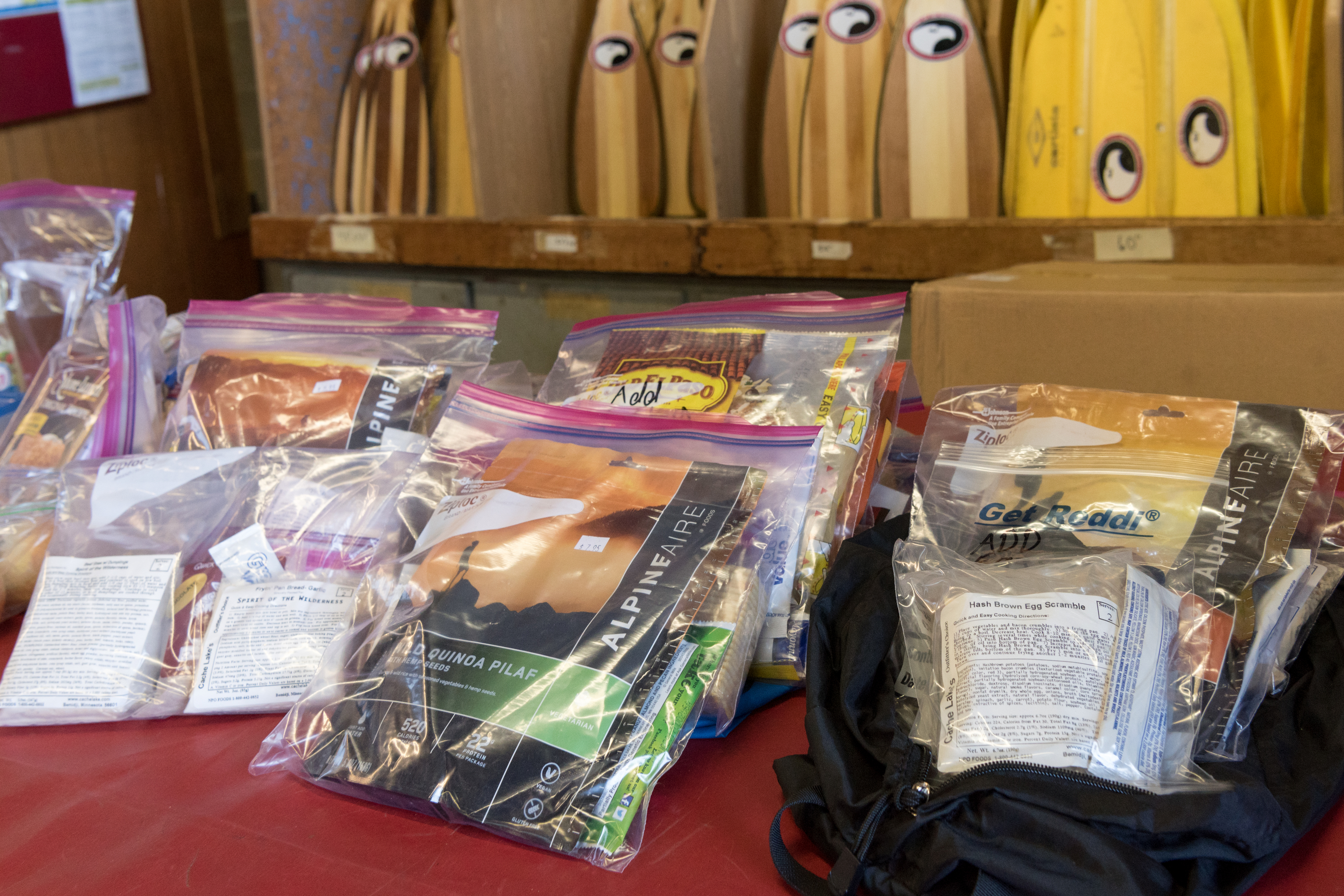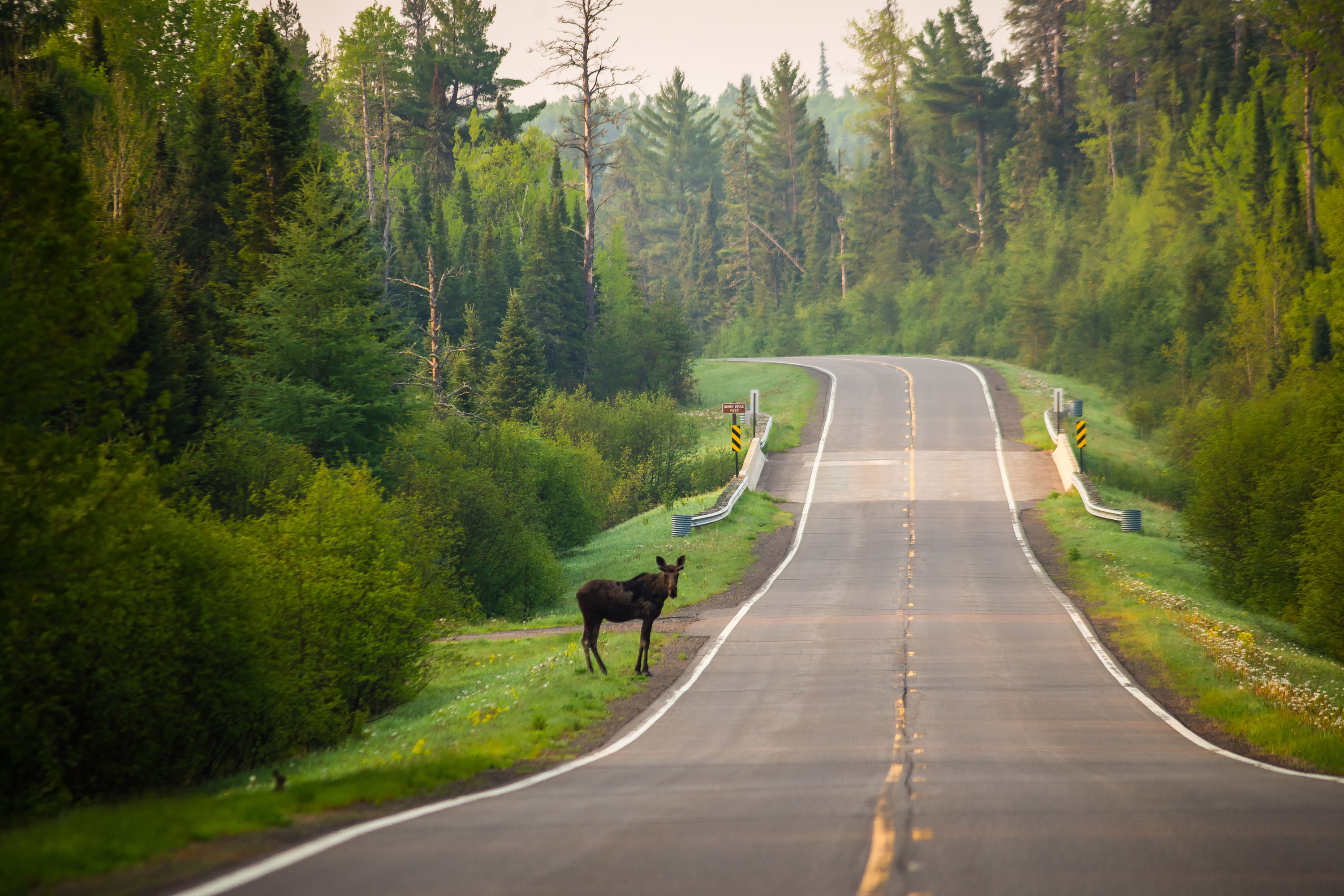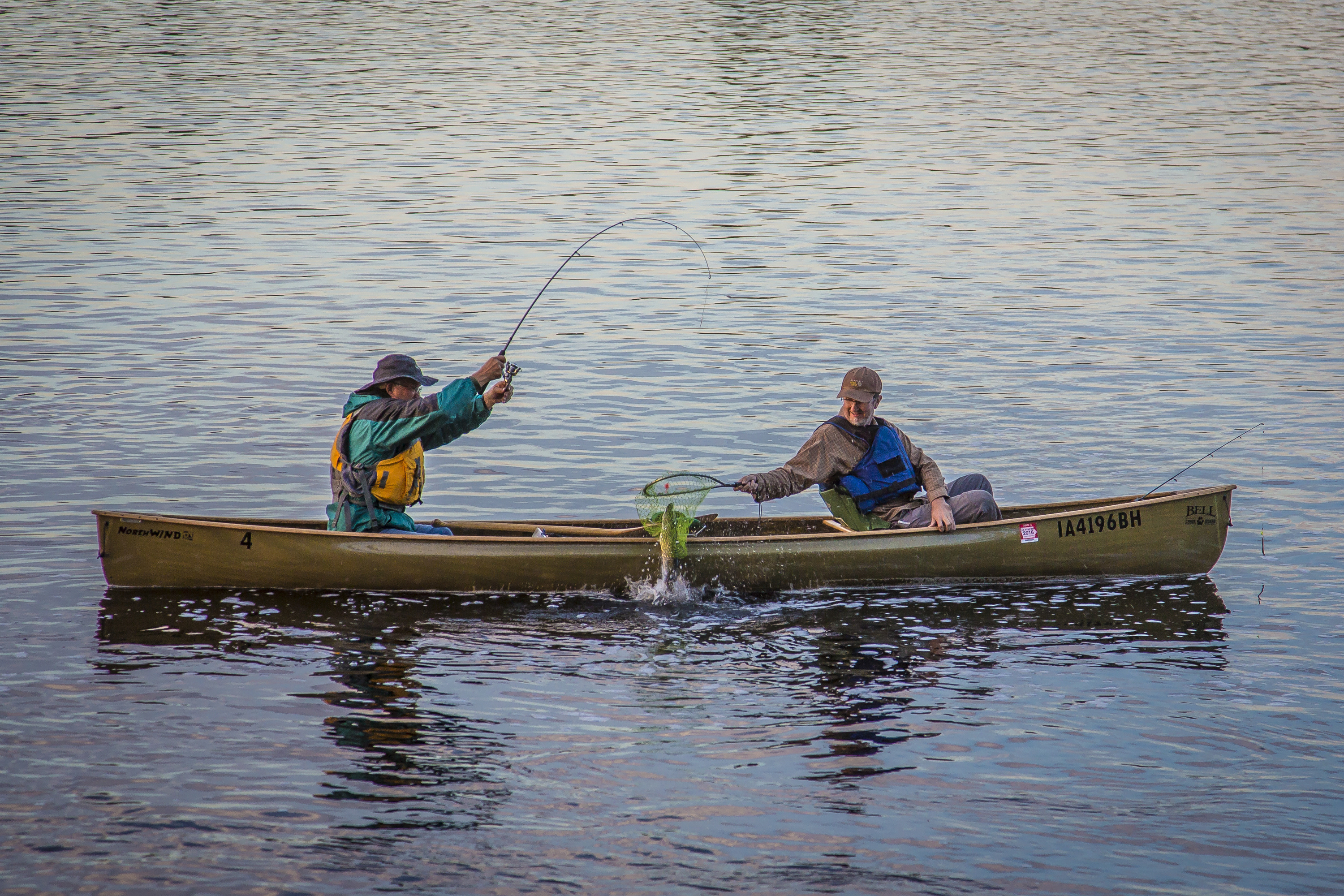
How to Plan a Boundary Waters Trip
How to Plan a Boundary Waters Trip
By Cinnamon Janzer
Accessible primarily by canoe, the Boundary Waters in northern Minnesota is one of America's most beautiful and remote adventures. Plan your first trip using this four-day beginner-friendly itinerary.
One of the hardest things about planning your first Boundary Waters trip is deciding where to go within the vast preserve’s 1,200 miles of canoe routes, 11 hiking trails and approximately 2,000 designated campsites.
While it can be tempting to paddle your heart out and see as much as you can, the best way to do the Boundary Waters the first time is to pick a central spot to set up camp and take day trips from there. That way, you’ll spend more time exploring and less time packing and unpacking, portaging your canoe, and taking your tent down just to set it back up again.
This four-day itinerary highlights some of the best sights and camping spots along a moderate course, and ends with a hearty dose of small town Minnesota on the final day—a complete “Up North” experience if there ever was one.

Freeze-dried foods make for easy and delicious Boundary Waters meals / Lucy Hawthorne
Pre-Trip Preparation
The key to a successful Boundary Waters trip is proper preparation. If you head out without a plan, or sans necessary equipment, chances are you’ll feel more like you’re on a bad episode of “Survivor” rather than in one of the most incredible places on Earth.
When packing, make sure you have the essentials covered:
- Two full sets of weather-appropriate clothing
- Footwear that functions well in water and on rocks
- Rain gear
- Dry bag
- Zinc (leave the sunscreen at home—it pollutes the water!) and bug repellant
- Toiletries
- A compass, flashlight, Boundary Waters map and any other wayfinding equipment plus spare batteries
- Fishing gear if you plan to drop a line in the water
- A water bottle and water purification tablets (or pump)
- A Swiss Army or multi-tool knife
- Matches in a waterproof case
- Easily transportable foods in lightweight, paper or plastic containers
Don’t forget that no cans or glass bottles are allowed in the wilderness. You won’t want to hassle with anything that isn’t worth its weight to portage (yes, you’ll be carrying your canoe and everything else you brought if you plan to travel between lakes). A good rule of thumb is if you can’t portage everything you brought in one trip (or two at the most), you probably brought too much. Plus, the less you have, the easier it is to leave no trace!
Simplifying your camp kitchen is an easy way to reduce your pack. When it comes to food, freeze-dried options plus a little salt, butter and cooking oil are the way to go, and will make your trip so much easier. If your culinary ambitions start calling, cast a line and catch your dinner straight out of the water: With the right lures, you'll be catching walleye, northern pike, smallmouth bass, trout and panfish in no time.
Next, arrangements. Whether you’re looking for a guide or simply some solid options for renting a canoe or other essential gear, you’ll find ample options in nearby towns. Ely has over 20 outfitters alone, there are several located along the Gunflint Trail and in Grand Marais, a few near Tofte and one in Babbitt. Trip outfitters can help you with canoeing equipment, camping supplies and the best boundary waters routes.
Last, you’ll need an entry permit from recreation.gov that’s linked to the specific entry point you plan on using before you hit the water. The type of permit you need depends on the type of trip you want to take (overnight or day use, hike or paddle), and remember that fishing licenses are additional. If you’re following this specific itinerary, the permit you need is for Entry Point #54.

A moose stands by the road near Grand Marais / Jackie Scherer
Day 1: Travel to Sea Gull Lake
Located in the northernmost reaches of Minnesota, getting to the Boundary Waters is part of the adventure. For this itinerary, you'll road trip along the North Shore of Lake Superior until reaching the Gunflint Trail, a secluded, scenic 55-mile road beginning near the charming town of Grand Marais. As your road slowly meanders its way through northern Minnesota you’ll pass a couple resorts, trip outfitters, trailheads and maybe even a moose—and that’s about it. If you have time, make a stop at the Chik-Wauk Museum and Nature Center near the end of the trail before embarking into the wilderness.
At the northern end of the Gunflint Trail, you'll reach Sea Gull Lake, one of the largest lakes in the Boundary Waters. According to Grand Marais-based Tuscarora Lodge & Canoe Outfitters, Sea Gull is a “large, versatile and visually stunning Boundary Waters lake … [with] a route to accommodate every type of Boundary Waters first-timer.” Sea Gull is peppered with campsites, many within a quick 20- to 45-minute paddle from Entry Point #54, so you’re practically guaranteed to find a spot that fits your needs.
Once your gear is loaded into your canoe, dip your paddle into the crystal-clear waters of Sea Gull Lake and venture into the majestic northern wilderness in search of a campsite. As you scan the perimeter for sites, look out across the vast blue waters of Sea Gull Lake and bask in the serene calm of your first time in the Boundary Waters—tall pine trees hugging a rocky shoreline, the cloud-free sky reflecting off the lake's glassy surface.
After you’ve found a site and set up camp, it's time to rest and relax for your first full day in the Boundary Waters. Take a short joy paddle, prepare a meal or curl up with a book beneath a canopy of majestic pines before nestling into your tent for a deep sleep in the great northern wilderness.

Portage your canoe between lakes in the Boundary Waters / Joe Baumann

A colorful sunrise over Grace Lake in the Boundary Waters / Gary Hamer

A nighttime campsite in the Boundary Waters / NAZpicture

Campsites in the Boundary Waters include a fire pit grill for all your camp kitchen dreams / Gary Hamer

A foggy sunrise over the glimmering, blue Boundary Waters / Gary Hamer
Day 2: Canoe Sea Gull Lake's Turquoise Waters
There is virtually nothing better than basking in the lake’s wide-open spaces and panoramic vistas while dipping an oar into its silky smooth waters. On sunny days, the water takes on an almost turquoise hue that will make you feel like you’re in the Caribbean rather than Minnesota.
Although not the biggest lake in the Boundary Waters by any means, Sea Gull is big. You can paddle for hours and hours without ever hitting land. Toward the western edge of the lake, as the campsites and canoes become sparser, you’ll think you’ve stumbled across paradise. Tuscarora suggests searching for "a hidden waterfall on the lake's southern shore," but gives no other directions—think you can find it?
If you’re feeling up to a portage, Sea Gull has you covered there, too. Derived from the French word “porter,” which translates to “carry” in English, portaging in the Boundary Waters is the act of carrying your boat over a land route from one lake into another. Portaging offers visitors a quick change of both pace and scenery, and is one of the Boundary Waters’ most emblematic activities.
Designated portages on the northern edge of Sea Gull connect you to lakes like Saganaga, Grandpa and Roy, or to Paulson and Jimmy Lake on Sea Gull’s southern edge. Depending on where you set up camp, portaging to another lake could be a few minutes, hours or your whole day, so check your maps and plan accordingly.

Two Boundary Waters anglers reel in and net a fish / Gary Hamer
Day 3: Fish, Fish and More Fish
If you visit Sea Gull Lake, you owe it to yourself to bring a fishing rod and cast a line. Known as a gold mine of lake trout, Sea Gull is also home to large walleye, northern pike and smallmouth bass populations, all of which make good eating for your own personal shore lunch.
Walleye are most active during low-light periods, so get on the water before dawn for your best shot at catching Minnesota's state fish. You'll find walleyes aren't the easiest fish to catch, but with a lot of dedication and a bit of luck you'll be feasting on their delicious, firm white meat in no time.
Not much for fishing but still want to take in the action? Venture back onto the water and paddle to your heart's content. As the tip of your canoe glides across the glassy lake surface, sit back and bask in the Boundary Waters' sun-soaked shores and quiet solitude, the quiet thrum of animal noises—whether moose, deer, pine martens, beavers, otters or more reclusive species—serenading your ears with the world's rich, natural melody.
As dusk turns to night, point your gaze to the stars for a chance to view the Milky Way, northern lights or other celestial wonders.

The Grand Marais harbor as seen from Lake Superior / Michael Harthan

Stock up on sweets at World's Best Donuts in Grand Marais / @foodformyfamily

The soups and sandwiches at Dockside Fish & Seafood Market are made with fresh-caught fish from Lake Superior / @mrssarahelyse

Hike to the scenic lookout point of Honeymoon Bluff near Grand Marais / Roy Son

Father and kids splash around on the shore of Lake Superior in Grand Marais / Roy Son
Day 4: "Up North" Charm in Grand Marais
Every Boundary Waters visitor needs to carve out some time in one of the tiny nearby towns for a full dose of Minnesota charm. On the western edge, Ely is a popular jumping off point for Boundary Waters adventures—and a worthy vacation destination on its own. But for this trip, Grand Marais is the most logical stop, back down the Gunflint Trail from Sea Gull Lake on the North Shore of Lake Superior.
Start your day with coffee and a doughnut from the boldly named World’s Best Donuts (the product of five generations of doughnut makers) for breakfast. Next, hike around Sweethearts’ Bluff if you haven’t gotten enough of the great outdoors yet, or stop by the independent Drury Lane Books for a read and the Betsy Bowen Studio to peruse art housed in an old church. Before getting out of dodge, treat yourself to a non-freeze dried meal at Hungry Hippie Tacos, dedicated to bringing southwestern flavor to a northeastern town.
The only downside to a BWCA trip is that eventually you’ll have to leave, but the good news is that many people find themselves coming back year after year. After your memorable first visit, maybe you'll join them.


